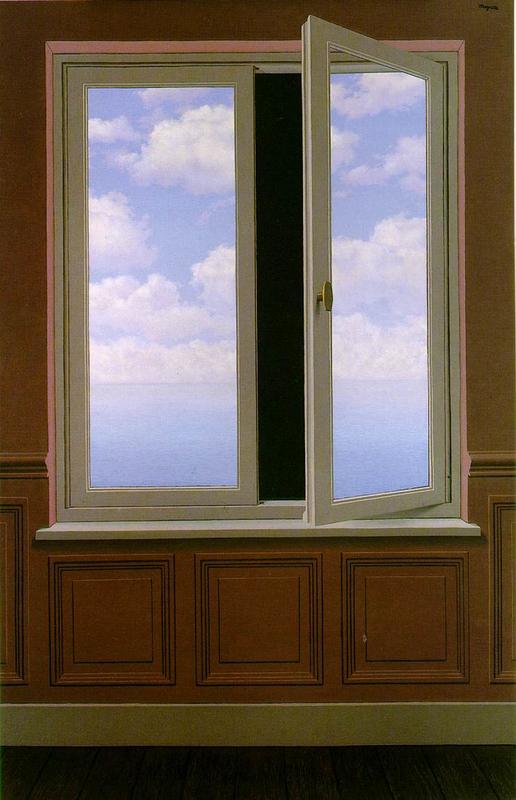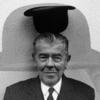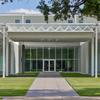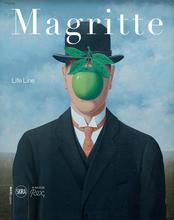More about The Telescope
- All
- Info
- Shop
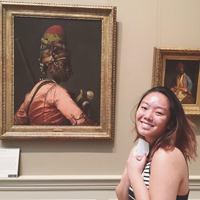
Contributor
Rene Magritte follows Alice through the looking-glass.
Magritte keeps things ambiguous with La lunette d’approche, which translates into The Telescope, without including an actual telescope in the painting. Instead, he presents us a section of a wall with a window or poorly placed built-in cabinet. In true Magritte fashion, he makes a mundane subject fascinating. The white frame could be a window or cabinet, but upon closer inspection, none of these options quite fit the criteria.
If understood as a window, the immediate exterior would consist of blue skies populated with fluffy white clouds, and a massive body of water. Maybe this is the interior of a really nice house-boat, and we’re floating in a body of water. However, the right frame complicates this reading. Thrown ajar, the open frame reveals darkness rather than a continued view of the ocean. So maybe we’re looking at a built-in cabinet with the panels covered in scenic wallpaper. Unfortunately, this theory also falls apart upon a closer look. The top left corner of the right frame lifts from the blue-skies mirage, so the oceanic scene is not attached to the back panel of the frame. Instead, the background exists behind the frame, but disappears into darkness once the viewer tries to open the frame to take a closer look or enter the scene.
Consistent with the rest of Magritte’s oeuvre, the artist invites his audience to closely examine his work, but avoids providing any definitive answers to the questions the artwork raises. The audience’s laborious attempts to better understand the art piece prove fruitless. Just like the mirror in Magritte’s Not to be Reproduced, this interior scene does not conform to the laws of physics either. Despite appearing realistic in style, Magritte’s paintings should rarely be understood as such. Instead, The Telescope seems to have an other-worldly, mystical quality like a Twin Peaks portal, wardrobe to Narnia, or Alice’s looking-glass.
Considering that the David Lynch / Mark Frost duo came after Magritte’s time, C.S. Lewis’ The Lion, the Witch, and the Wardrobe or Lewis Carroll’s Alice’s Adventures in Wonderland and sequel Through the Looking-Glass seem more appropriate influences. In fact, this would not be the first time Carroll inspired Magritte, who paid homage to the writer in Alice in Wonderland, or Alice au pays des merveilles, in 1945.
Sources
- Gohr, Siegfried. Magritte. New York: Harry N. Abrams, Inc., 2000.
- Hughes, Robert. The Portable Magritte. New York: Universe Publishing, 2001.
- Paquet, Marcel. Magritte. Koln: Taschen, 1992.
Featured Content
Here is what Wikipedia says about The Telescope (Magritte)
The Telescope (French: Le Téléscope) is a 1963 oil on canvas painting by René Magritte.
The painting depicts a window through which a partly clouded blue sky can be seen. However, the right side of the window is partially open, revealing a black background where the viewer would expect to see a continuation of the clouds and sky.
Check out the full Wikipedia article about The Telescope (Magritte)

